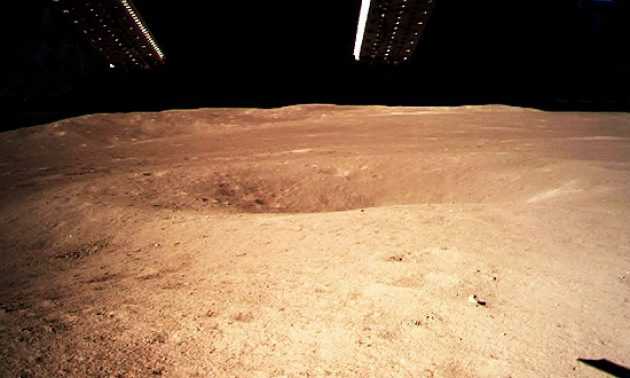HK talent tapped for camera, site selection for mission to moon’s far side
05 January, 2019

The first ever close-up of the moon’s surface on its far side, transmitted by China’s Chang’e-4 lunar probe, has appeared on front pages of numerous newspapers back on Earth.
The picture was shot with a camera-pointing system tailor-made by a team of optical experts at the Hong Kong Polytechnic University for China’s lunar endeavors.
Joining this groundbreaking mission was Professor Yung Kai-leung of PolyU’s Department of Industrial and Systems Engineering, whose team developed a camera-aiming system mounted on the upper part of the probe’s lander.
The system is capable of moving vertically by 120 degrees and rotating by 350 degrees to capture high-definition images of the moon as well as facilitating movement of the lunar rover, the Yutu (Jade Rabbit).
It is not the first time the system has been deployed to take sharp photos of the moon’s surface: It was first used in 2013 on the Chang’e-3, which landed on the moon’s Mare Imbrium crater.
The university also developed an innovative lunar topographic mapping and geomorphological analysis system that facilitated the selection of Chang’e-4’s landing site.
The selection of a safe landing site on moon’s far side – the hemisphere that always faces away from Earth – was one of the major tasks for the mission.
Dr Wu Bo, of the university’s Department of Land Surveying and Geo-Informatics, led a team and conducted site selection for the Chang’e-4 in a project funded by the China Academy of Space Technology.
Dr Wu Bo is seen at Xichang Launch Center where the Chang’e-4 was launched in December 2018. Photo: Handout
His team analyzed a huge amount of lunar remote sensing data from multiple sources and created high-precision and high-resolution topographic models of the northwestern South Pole-Aitken basin, where Chang’e-4 landed at noon on Thursday Beijing time.
These models cover terrain slopes, crater distribution, rock abundances, and geological history of the region as well as terrain occlusion to sun illumination and telecommunication. These analyses helped the China National Space Administration choose a number of optimal landing sites for the Chang’e-4 within the basin.
The two PolyU teams will also contribute to the mission of the Chang’e-5, slated for launch at the end of this year.
The new probe will consist of an orbiter and a lander and is set to be China’s first sample-return mission, aiming to bring at least 2 kilograms of lunar soil and rock samples back to Earth.
TAG(s):
